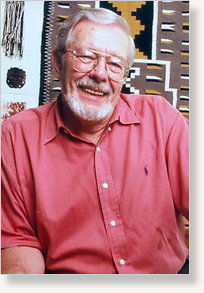
The cause was cardiac arrest brought on by congestive heart failure, said his wife, Amber Johnson.
A founding proponent of the so-called new archaeology movement, Dr. Binford was once described by Scientific American magazine as "quite probably the most influential archaeologist of his generation." From his base, first at the University of New Mexico and then at Southern Methodist University, he took to the field in Alaska, Australia and Africa, studying living hunters and gatherers to better understand similar societies that had existed in the past.
It was as a young assistant professor at the University of Chicago in 1962 that Dr. Binford tossed a stone into archaeology's waters and watched the ripples expand from shore to shore. That year his article in the journal American Antiquity, "Archaeology as Anthropology," proposed that his colleagues move beyond an emphasis on cataloging artifacts and looking for museum pieces and concentrate on a broad scientific analysis of what their excavations tell of how ancient people lived, the commoners as well as the elite.
Soon Dr. Binford's contemporaries and then a wider number of researchers joined the forces of the new archaeology, now known as processual archaeology, in which many branches of science are brought to bear in studying the behaviors and processes of past societies.
"Lewis Binford led the charge that pushed, pulled and otherwise cajoled archaeology into becoming a more scientific enterprise," said David J. Meltzer, a professor of prehistory at Southern Methodist University, in Dallas. "Much of how we conceptualize and carry out archaeology in the 21st century is owed to Lew's substantial legacy."
Lewis Roberts Binford was born on Nov. 21, 1931, in Norfolk, Va. He started college but then entered the Army, serving as a translator for American social scientists working in Japanese resettlement programs. That was when he first became interested in anthropology.
He completed college at the University of North Carolina and earned a doctorate in anthropology at the University of Michigan. Some of his first excavations were in France, where his insights and zest for debate soon emerged in full force over the identification of tribes associated with certain artifacts.
After his seminal paper on new archaeology, Dr. Binford taught briefly at California universities before joining the faculty at New Mexico. There, with his second wife, Sally, also an archaeologist, he published the textbook New Perspectives in Archaeology.
Dr. Binford was the author or co-author of 18 books. Family members say he had five wives, several of whom were anthropologists and collaborators in his research. His most recent publication, Constructing Frames of Reference: An Analytical Method for Archaeological Theory Building Using Ethnographic and Environmental Data Sets, is considered a landmark in the study of hunter-gatherer populations. His fourth wife, Nancy Madaris Stone, assisted him on this and other publications.
Besides his wife, Dr. Johnson, Dr. Binford's survivors include his daughter, Martha, from his first marriage, to Jean Riley Mock.
Dr. Binford's honors included membership in the National Academy of Sciences, the Huxley Memorial Medal from the Royal Anthropological Institute of Britain and a lifetime achievement award from the Society for American Archaeology.
Dr. Binford retired from Southern Methodist University in 2003 and moved to Kirksville, where Dr. Johnson is an associate professor of anthropology at Truman State University. He continued writing and lecturing. Dr. Johnson said that she and a colleague planned to finish editing one more book written by Dr. Binford, his 19th.



Reader Comments
to our Newsletter